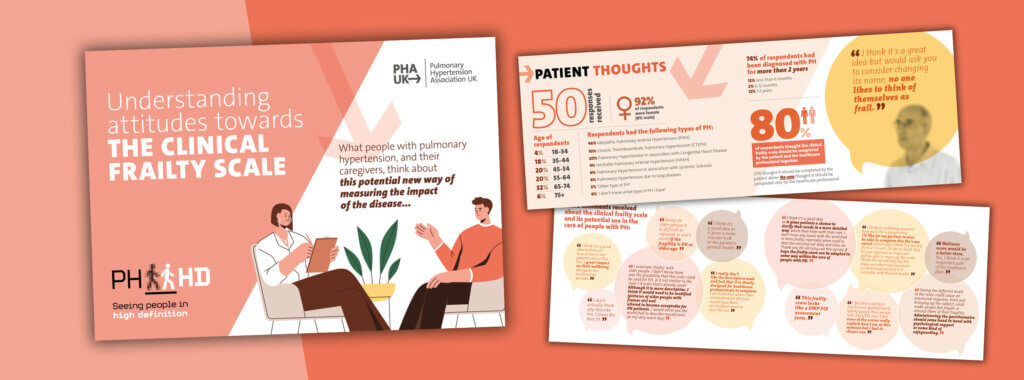
Most people with PH in the UK will be familiar with EmPHasis-10 – a questionnaire that’s used in clinical care to measure the impact of pulmonary hypertension on someone’s quality of life, and help guide decisions around treatments and their impact on quality of life.
We’ve been exploring whether another questionnaire, the ‘clinical frailty scale’, could also be useful as a way of helping patients describe how PH is affecting them.
The clinical frailty scale is already used around the world in some other health conditions, including chronic obstructive pulmonary disease (COPD).
It assigns a ‘score’ to a patient based on defined descriptions of activity and functional status. The patient is observed and asked about areas including mobility, balance, use of walking aids, and the ability to carry out daily activities such as dressing, eating, shopping, and cooking. (Therefore, there is the potential of the scale empowering people to better communicate how PH affects daily living – for the purpose of benefits or insurance claims, changing working hours / patterns or discussions around early or medical retirement).
It is important to understand that NHS England describes frailty as a loss of resilience that means people don’t bounce back quickly after a physical or mental illness, an accident, or other stressful event. Although for some people, the word frailty conjures images of someone very old, the scale is used across all age groups (although most often in those over 65).
The scale assigns a score of between 1 and 9, based on the descriptions set out here, and this score is then used by healthcare professionals to guide patient care by helping them make decisions about treatment pathways.
The scale will also help generate conversations about how PH is affecting the patient. Frailty cannot be measured by a blood test or scan, so this is another way to give patients a voice.
The clinical frailty scale is used most often in patients aged 65. At present it is not routinely used in the care of people with pulmonary hypertension, but there is growing evidence of its value as an assessment tool in lung disease, for people of all ages.
Here at the PHA UK, we set out to explore whether using the scale would be helpful in the care of people with PH, and whether it would be welcomed by patients and carers.
We conducted an online survey in the summer of 2024 and you can see the findings here.
This exploration forms part of a pioneering new research project to provide insight into what it’s like to live with PH over a period of time.